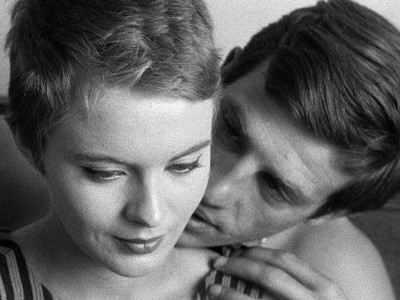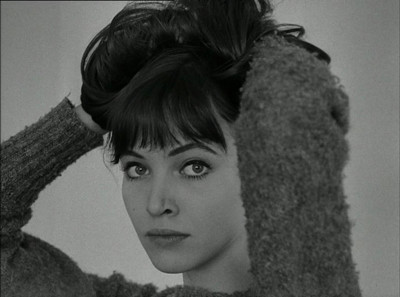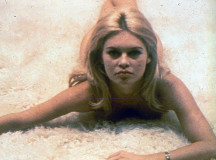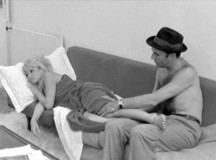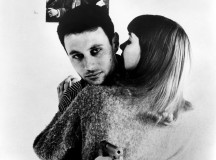TIFF Cinematheque launches Godard retrospective
STORY BY NICHOLAS OLSEN
PHOTOS COURTESY OF TIFF
Girls, guns and style.
Fans and newcomers alike can now experience Jean Luc-Godard’s films by attending TIFF Cinematheque’s massive, two-season retrospective.
Godard Forever Part One spans the French New Wave master’s “Golden Age” beginning with Breathless (1959) and ending with his apocalyptic black comedy Weekend (1967).
The retrospective includes 17 feature films and 11 short films, including many archival prints and new 35mm selections.
Breathless is the obvious starting point, a movie so groundbreaking that many compare it to Citizen Kane. The story follows a young car thief as he hides out in Paris with his American girlfriend after murdering a police officer.
“Breathless has had a huge impact on contemporary genre cinema, the gangster genre in particular,” said Angela Stukator, associate dean of Animation and Game Design at Sheridan College.
With its stylized use of jump cuts, non-linear narrative structure and dismissal of authority, the film has influenced many great filmmakers, including notorious rule-breaker Quentin Tarantino.
“A lot of contemporary filmmaking certainly looks back to him. An example is Quentin Tarantino, whose own production company he named in homage to Godard, after his film Band of Outsiders (1964). This is one of the ways into Godard’s cinema for a young audience who might not be familiar with his work,” said James Quandt, senior programmer for TIFF Cinematheque.
Quandt aims to show how Godard impacts film form throughout his career. His experimental style shows the audience that a movie could be a work of art, an illusion and not necessarily reality. Through creative form, Godard made audiences aware of stylistic editing by using abrupt shifts in tone between the comedic and tragic. His use of citation to other works of art, including painting; music and literature also help define his cinema.
The retrospective also looks into how Godard dismissed the typical way traditional French cinema was made during the Golden Age, while proving politically and socially conscious in his vision. Dealing with war in Le Petit Soldat, narcissism in Breathless and the exploitative nature of Hollywood in Contempt (1963). It’s interesting that the serious sub textual themes in these films are contrasted with what is usually a disintegrating relationship between a headstrong man and a beautiful femme fatale.
The director “championed Hollywood cinema” with loving references to the films of Alfred Hitchcock and similar directors during that period. He appreciated these artists, as did many in the French New Wave movement, while many European critics dismissed them.
Perhaps the most important element of Godard’s films is his actresses. Many iconic women are seen throughout his repertoire and play a fundamental role in his universe, both in and outside the camera.
“A key thing in Godard’s cinema, especially in his early period, are the actresses, because in many cases they became his wife or muse. Anna Karina is the most obvious example, Anne Wiazemsky in La Chinoise, whom he fell in love with on screen when he first saw her in Bresson’s film, Au Hasard Balthazar. He fell in love with her image, tracked her down and ended up marrying her,” said Quandt.
Always hip and beautiful, these women helped solidify Godard as a fresh, stylistic filmmaker, and a trendsetter in 1960s fashion.
Godard Forever is huge in its scope and it’s no surprise that acquiring all the original archival prints was challenging.
“This is due to Godard’s production history, where he sometimes used literary works without properly buying the rights for them,” said Quandt.
“There is a ton of work that goes into securing good prints. We have, in every possible case, borrowed from archives and there are a number of new prints in the series that are from U.S distributors. We brought in a number of prints from France as well.”
Highlights include archival prints of 2 or 3 things I know About Her (1966), Vivre sa vie (1962) starring his then-wife Anna Karina, and new 35mm prints of Weekend and Le Petit Soldat. A new digital restoration of Far From Vietnam and an “ultra-rare archival” 16mm print of Une femme coquette, Godard’s first fiction film, are also included.
Part One runs until Feb. 13. at TIFF Bell Lightbox. Part two begins in Fall 2014.
Check out the complete schedule here.
- Brigitte Bardot in Contempt.
- Brigitte Bargot and Michel Piccoli in Contempt (1963)
- Michel Subor and Anna Karina in Le Petit Soldat (1963)




